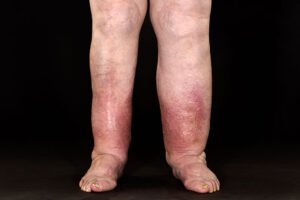Pigeon-Toe_ What You Should Know
Understanding Pigeon-Toed Walking in Children
When a child walks with their toes pointing inward, they may be described as pigeon-toed. This condition, often noticeable when a child begins to walk, is relatively common in early childhood and tends to resolve naturally as they grow. While it primarily affects young children, some adults may also exhibit this walking pattern. In most cases, pigeon-toed walking is not a serious concern and does not require intervention. However, understanding its causes, potential impacts, and when to seek medical advice is essential for parents.
What Does Pigeon-Toed Mean?
Pigeon-toed walking, or in-toeing, occurs when a child’s feet turn inward while walking or running. This distinctive gait is usually observed during the toddler years and is often temporary. For most children, the condition corrects itself without any treatment by the age of 3 or 4. In rare cases, adults may display a pigeon-toed gait due to unresolved childhood conditions, congenital issues, or muscle imbalances.
Causes of Pigeon-Toed Walking
Several factors can contribute to a pigeon-toed gait, often related to the alignment of bones in the legs or feet. Consulting a healthcare provider is recommended to determine the specific cause and ensure proper development. Common causes include:
Metatarsus Adductus
Metatarsus adductus is a congenital condition where the bones in the forefoot (metatarsals) curve inward. This misalignment can cause the toes to point inward, resulting in a pigeon-toed appearance. A physical exam and, if needed, an X-ray can confirm this diagnosis.
Tibial Torsion
Tibial torsion refers to a slight twisting of the shinbone (tibia), which may cause the foot to turn inward. This condition is often seen in young children and typically resolves naturally by age 4. An X-ray can help assess the degree of torsion.
Femoral Anteversion
Femoral anteversion occurs when the thigh bone (femur) rotates inward excessively at the hip. This condition affects about 10% of children and may cause a knock-kneed appearance alongside a pigeon-toed gait. A medical evaluation, often including an X-ray, is used to diagnose this condition.
Symptoms of Pigeon-Toed Walking
In most cases, pigeon-toed children experience no discomfort. The condition is primarily cosmetic, with the toes and knees turning inward during movement. However, in rare instances, symptoms may include:
-
Tightness in the calf muscles
-
Mild discomfort along the outer edges of the feet
-
Occasional knee pain
Parents typically notice the inward-turning gait when their child begins walking. Rest assured, this is usually a painless condition that does not hinder a child’s ability to move.
When to Consult a Healthcare Provider
If you observe your child walking with a pigeon-toed gait, it’s wise to schedule a visit with a pediatrician or primary care provider. They can assess the condition and determine whether further evaluation is necessary. Most children outgrow pigeon-toed walking by early childhood, but medical attention is recommended if:
-
The child experiences pain while walking
-
The gait significantly impairs their ability to walk or run
-
The condition persists beyond age 4
In such cases, a referral to an orthopedic specialist may be advised for a more detailed evaluation.
Risk Factors for Pigeon-Toed Walking
Pigeon-toed walking often develops during fetal development and is not preventable. Potential risk factors include:
-
Multiple births (e.g., twins)
-
Breech positioning in the womb
-
Low amniotic fluid levels
-
Large fetal size
These factors are generally beyond a parent’s control, and the condition typically resolves without intervention.
Pigeon-Toed Walking in Adults
In adolescents or adults, a pigeon-toed gait may indicate muscle weakness in the hips or legs, which affects leg alignment during walking. Strengthening exercises targeting these muscles can often improve the gait. Consulting a physical therapist may be beneficial for adults experiencing this issue.
Diagnosing Pigeon-Toed Walking
Diagnosing pigeon-toed walking involves a combination of physical examination and, in some cases, imaging tests. A healthcare provider may:
-
Examine the child’s legs and feet for signs of metatarsus adductus, tibial torsion, or femoral anteversion
-
Conduct a gait analysis to observe the child’s walking pattern
-
Order an X-ray to evaluate bone alignment
These steps help pinpoint the cause and guide any necessary treatment.
Treatment Options for Pigeon-Toed Walking
Most children with pigeon-toed walking require no treatment, as the condition typically resolves by early childhood. When intervention is needed, options may include:
Physical Therapy
Physical therapy can help by stretching tight muscles and strengthening the hips and legs. A therapist may design exercises to improve gait and alignment. However, parental attempts to stretch a child’s feet without professional guidance are generally ineffective.
Bracing or Casting
In some cases, braces or serial casting may be used to position the child’s feet and legs correctly as they grow. This approach is most effective for conditions like metatarsus adductus.
Surgical Intervention
Surgery is rarely necessary and is reserved for severe cases that do not improve with conservative measures. For example, an osteotomy (bone-cutting procedure) may be performed to correct significant tibial torsion in older children (typically over age 10). Surgery is considered a last resort and is uncommon.
Outlook for Pigeon-Toed Children
Pigeon-toed walking is a common condition that affects roughly 1 in 5,000 children. It is usually caused by temporary misalignments in the bones or muscles, often linked to positioning in the womb. The vast majority of children outgrow the condition without any lasting effects. Parents can take comfort in knowing that a watchful waiting approach, combined with regular check-ups, is often sufficient.
Final Thoughts
Every parent wants their child to develop healthily, and noticing a pigeon-toed gait can raise concerns. Fortunately, this condition is typically mild and self-correcting. By staying informed and consulting healthcare professionals when needed, parents can ensure their child’s growth and mobility remain on track. If you have concerns about your child’s gait, a medical evaluation can provide
💡 Frequently Asked Questions
Getty Illustrations or photos
What Does It Signify towards Be Pigeon-Toed?
Answer coming soon. We are working on detailed responses to this common question.
Continuously Questioned QuestionsCan bodily procedure suitable pigeon-toed?
Answer coming soon. We are working on detailed responses to this common question.
Master Extra:Gait Performing exercises Exercise routines Within just Bodily Remedy How can pigeon-toe be corrected inside of older people?
Answer coming soon. We are working on detailed responses to this common question.
⭐ Expert Tips
- Include seasonal or trendy variations to keep your meals exciting.
- Highlight prep shortcuts or time-saving techniques for busy cooks.
- Consider dietary restrictions and include substitution suggestions.
✅ Key Takeaways
- These dinner ideas are perfect for impressing guests or enjoying special occasions.
- Choose recipes that match your skill level and available kitchen tools.
- Presentation and taste both contribute to a memorable dining experience.
📣 Join Our Community
Want more inspiration like this? Subscribe to our newsletter for weekly dinner ideas and cooking tips!



